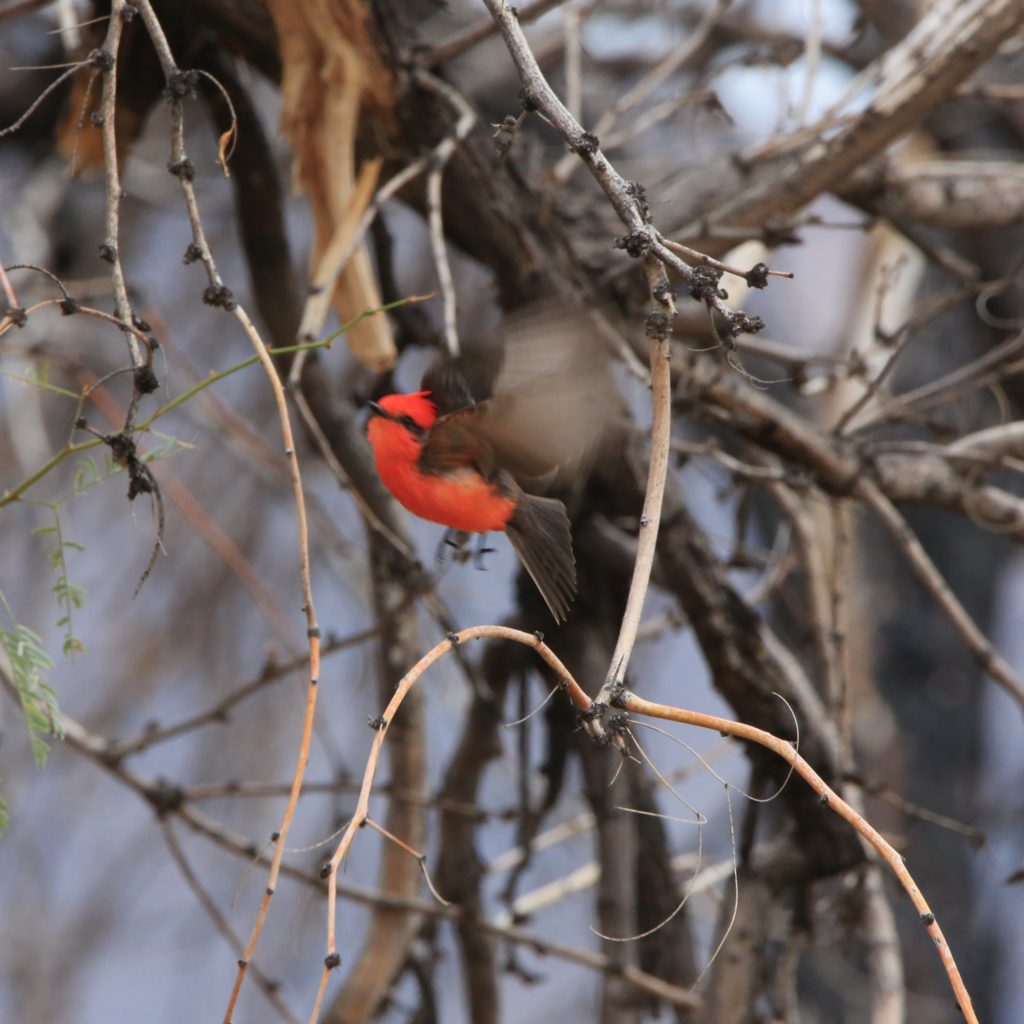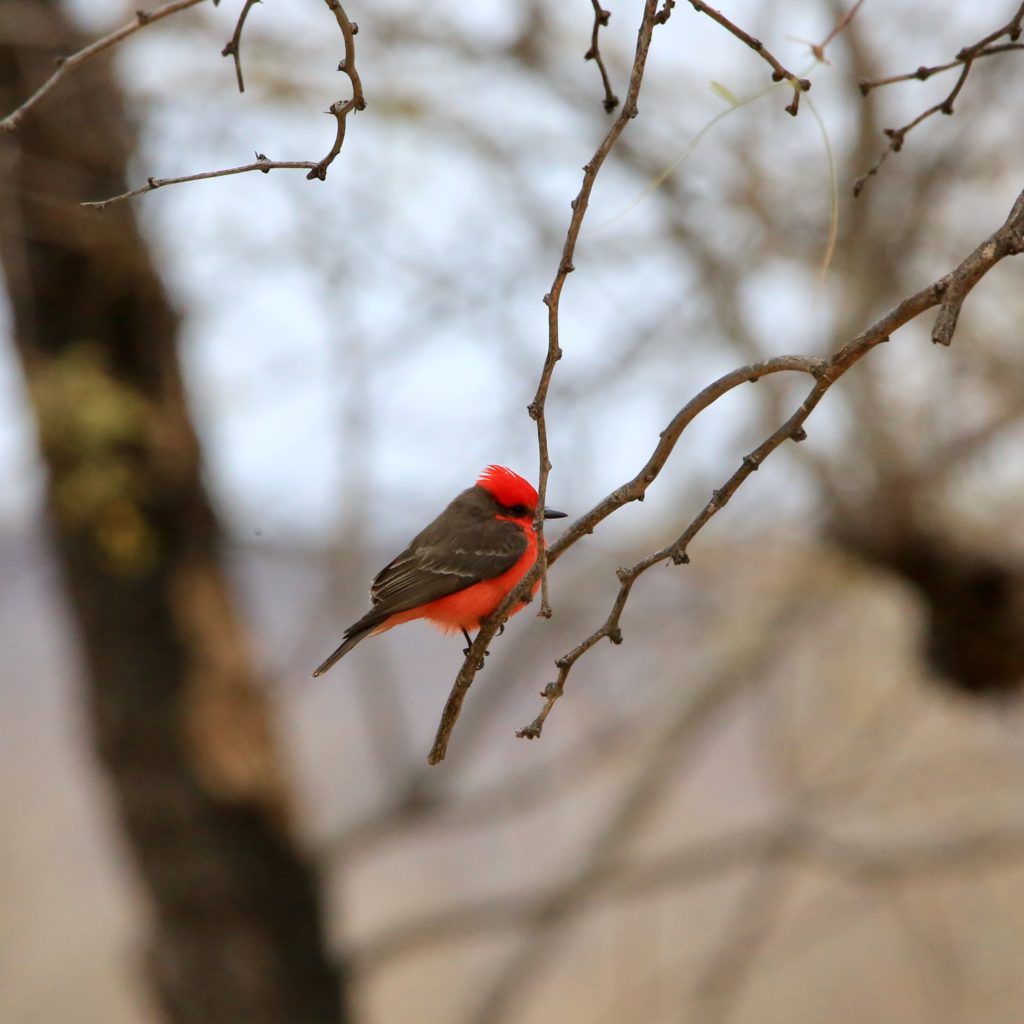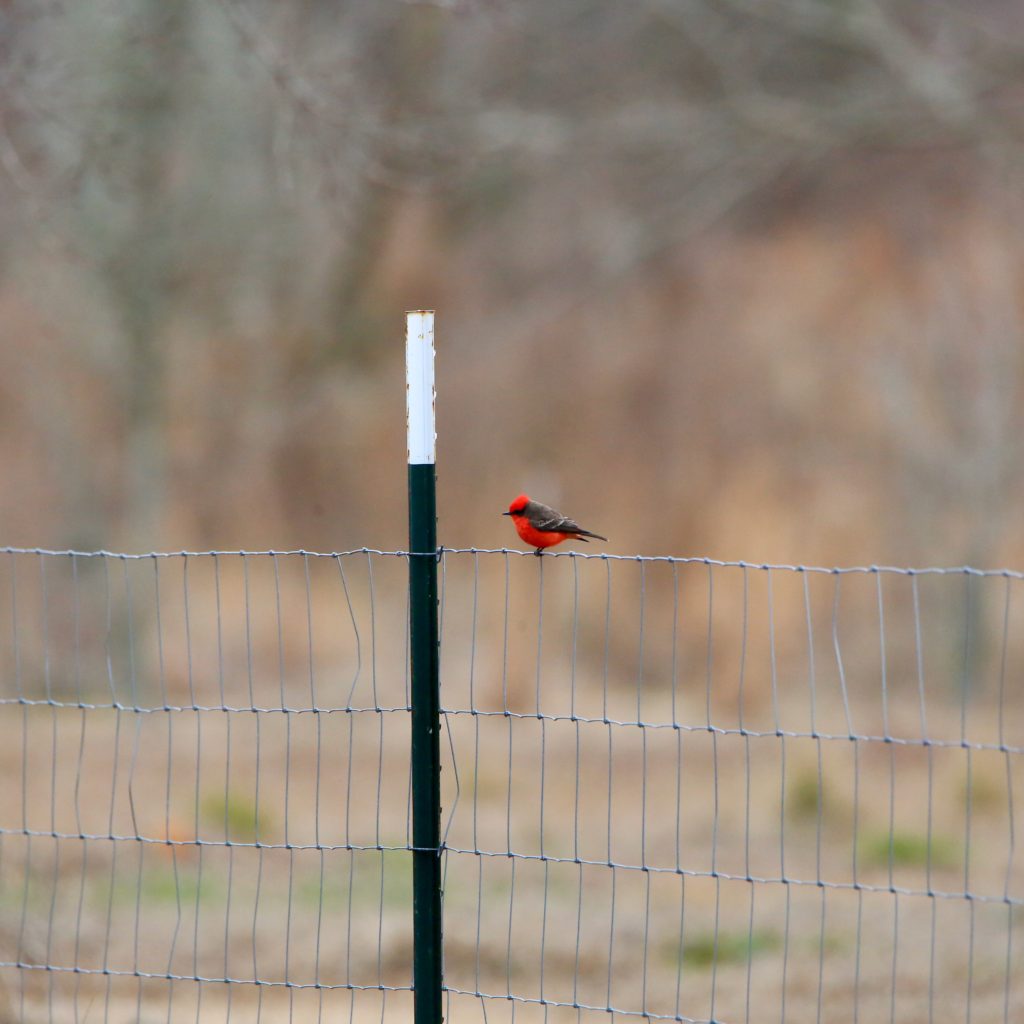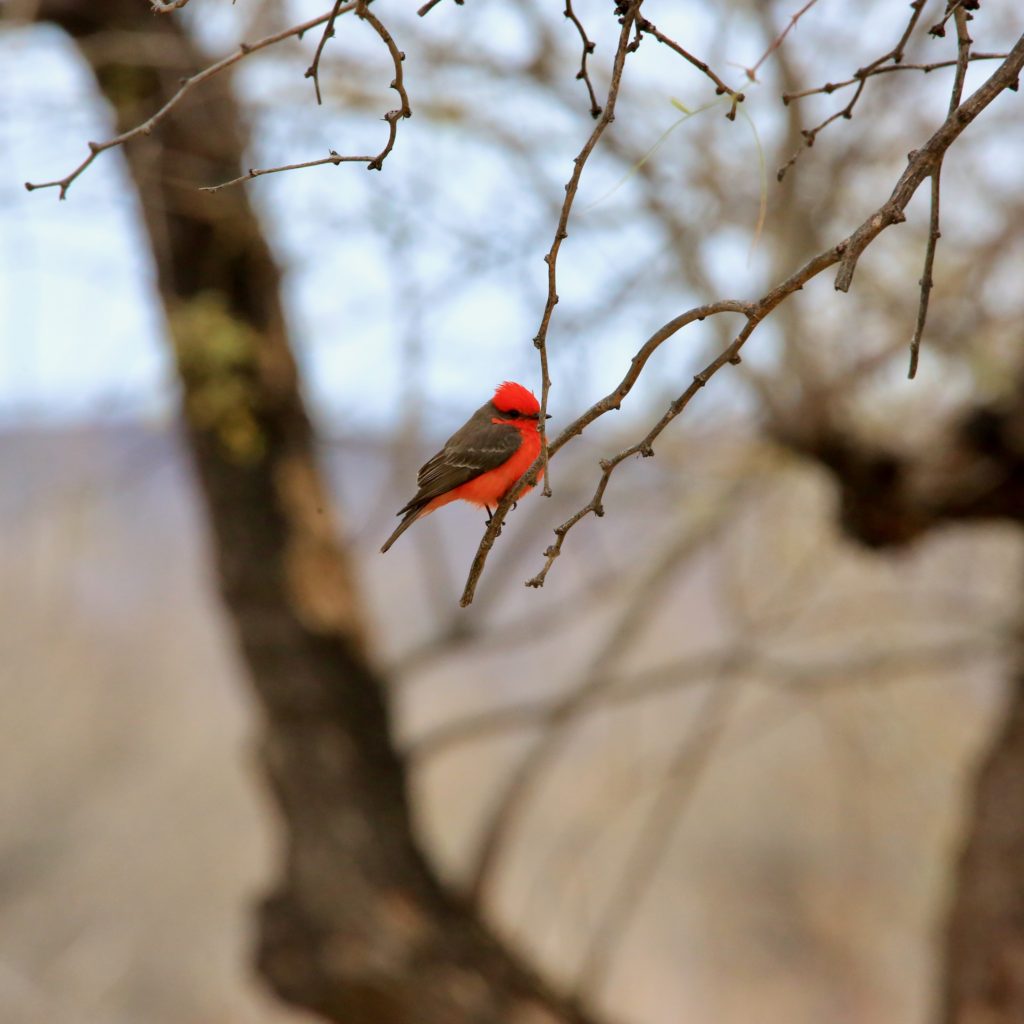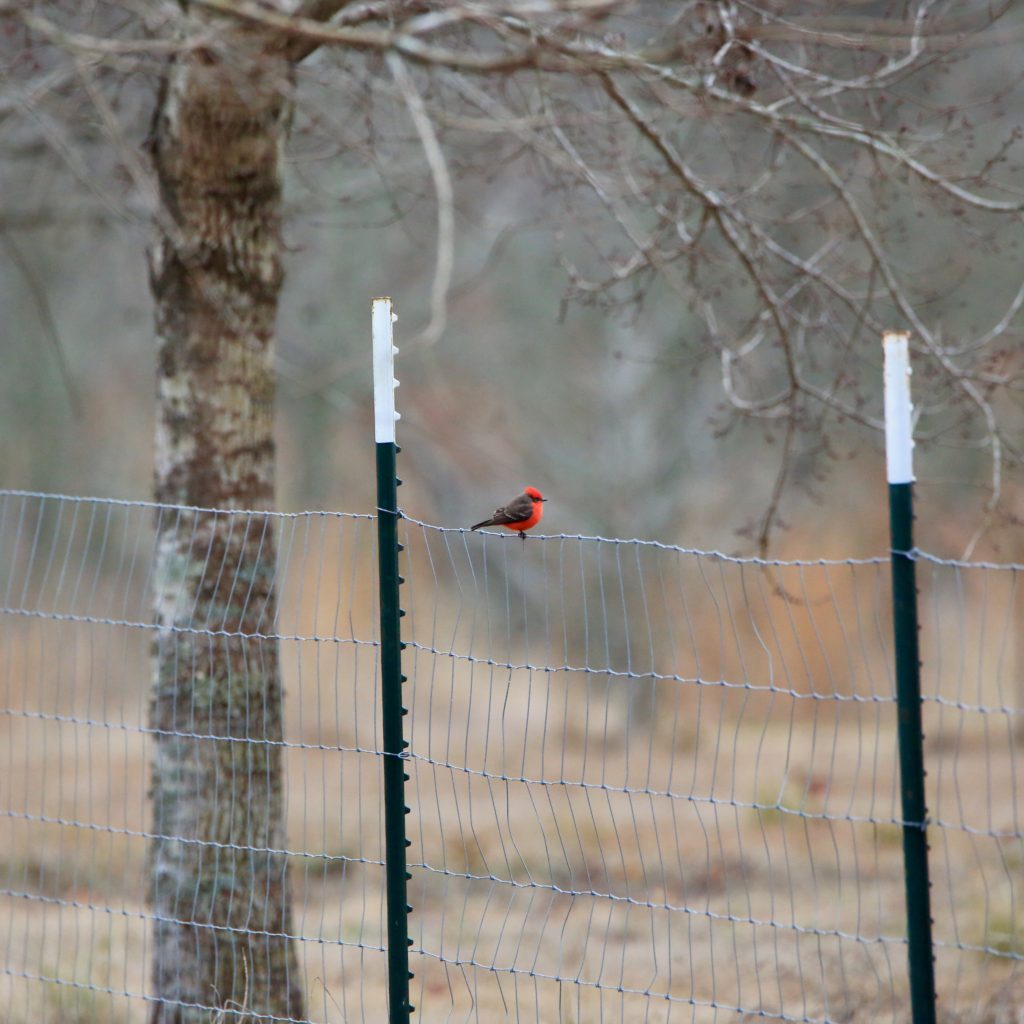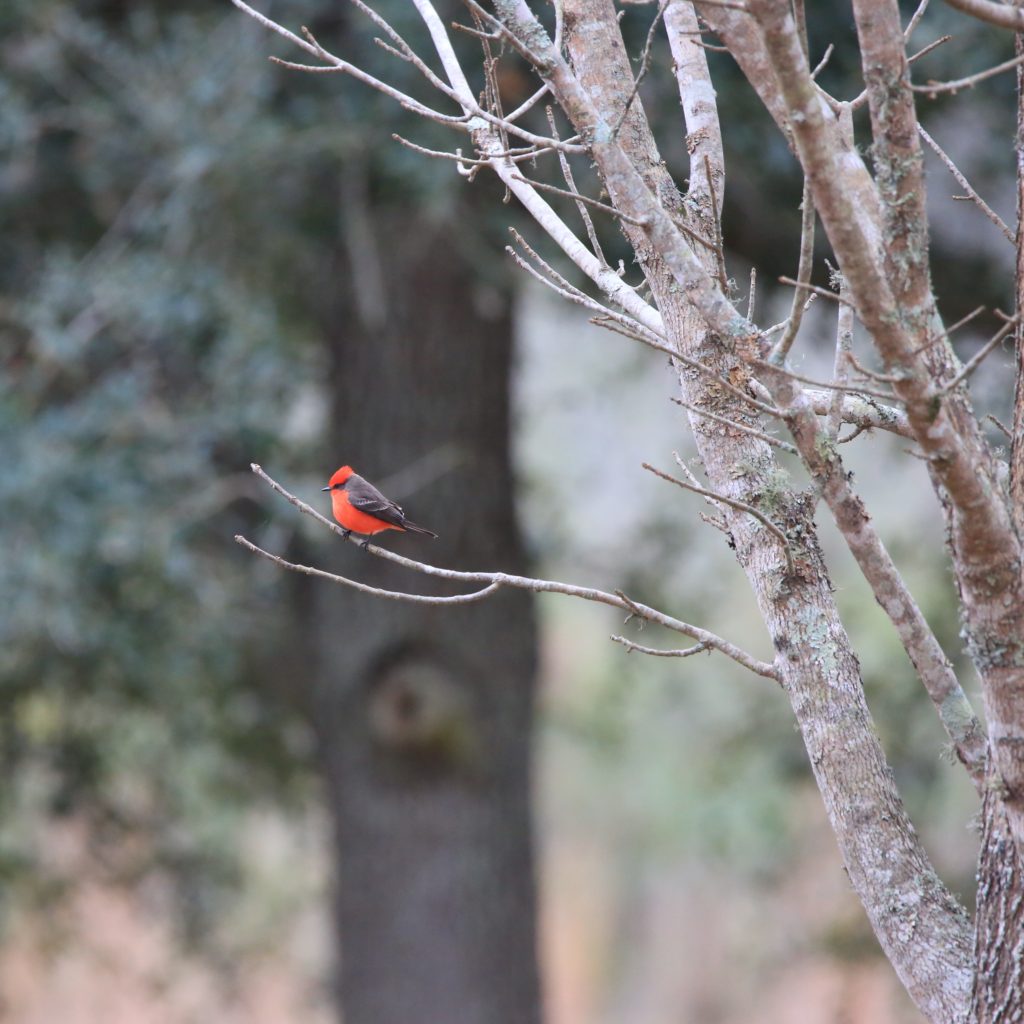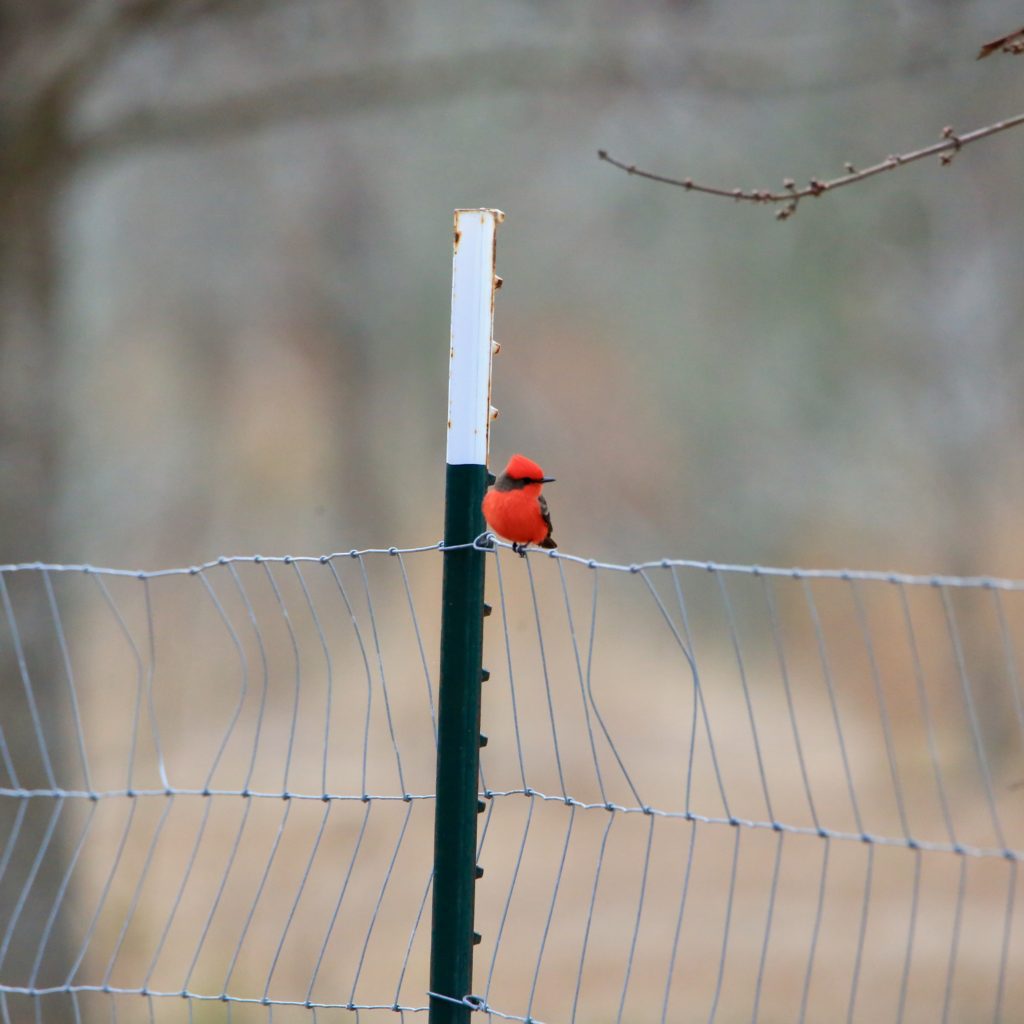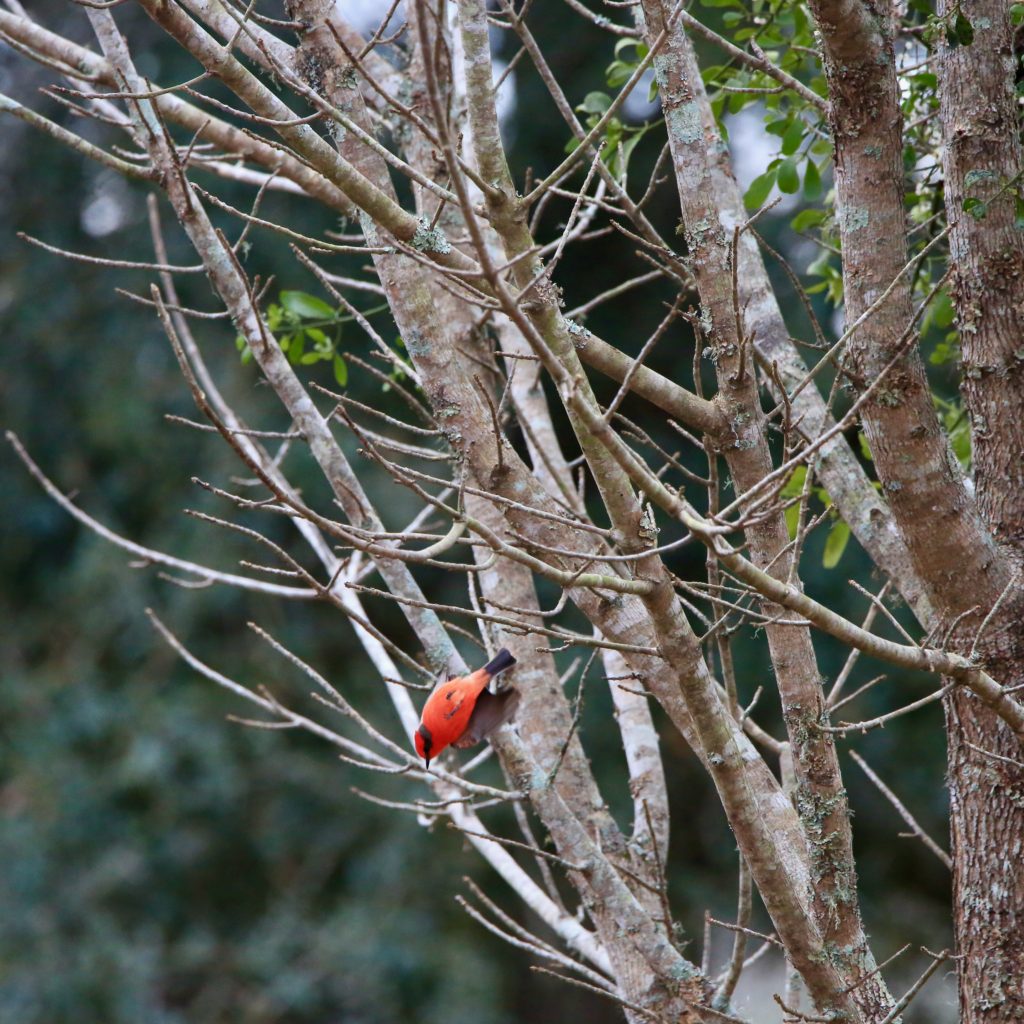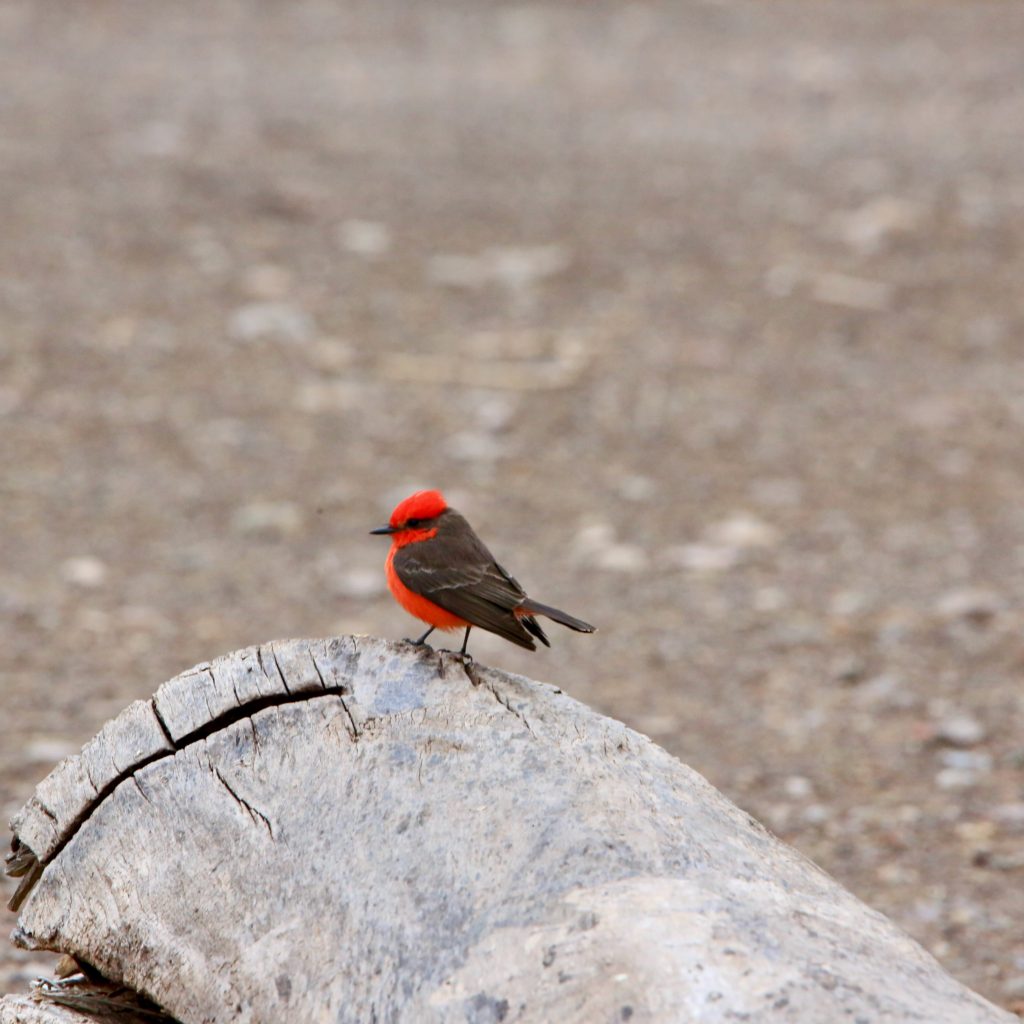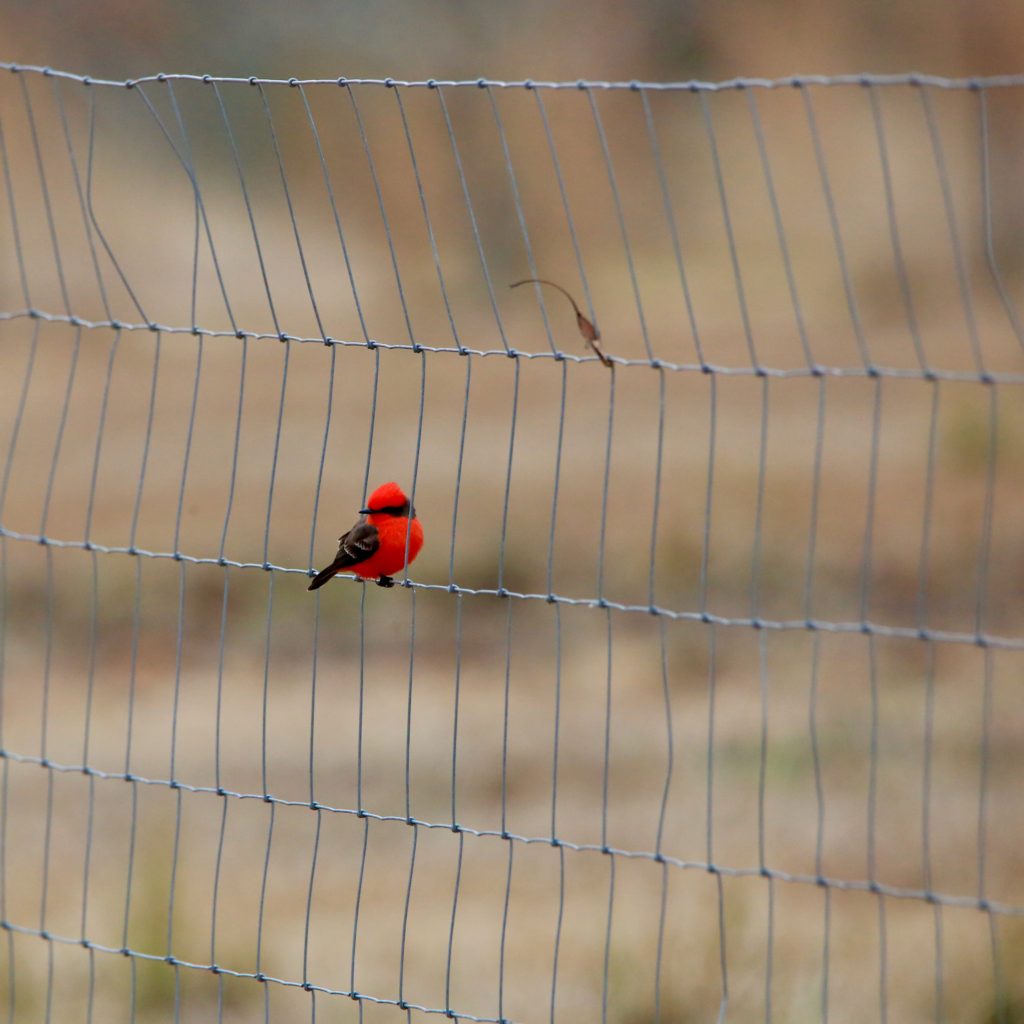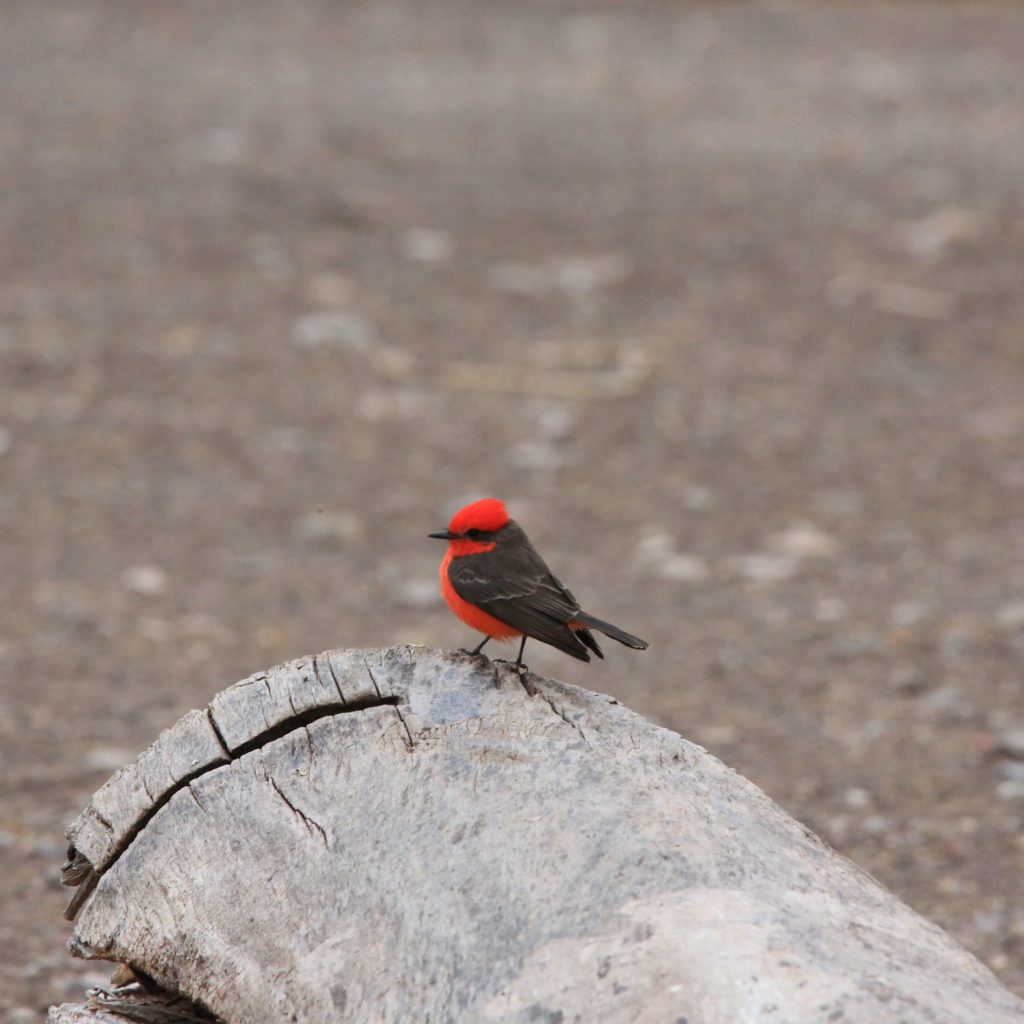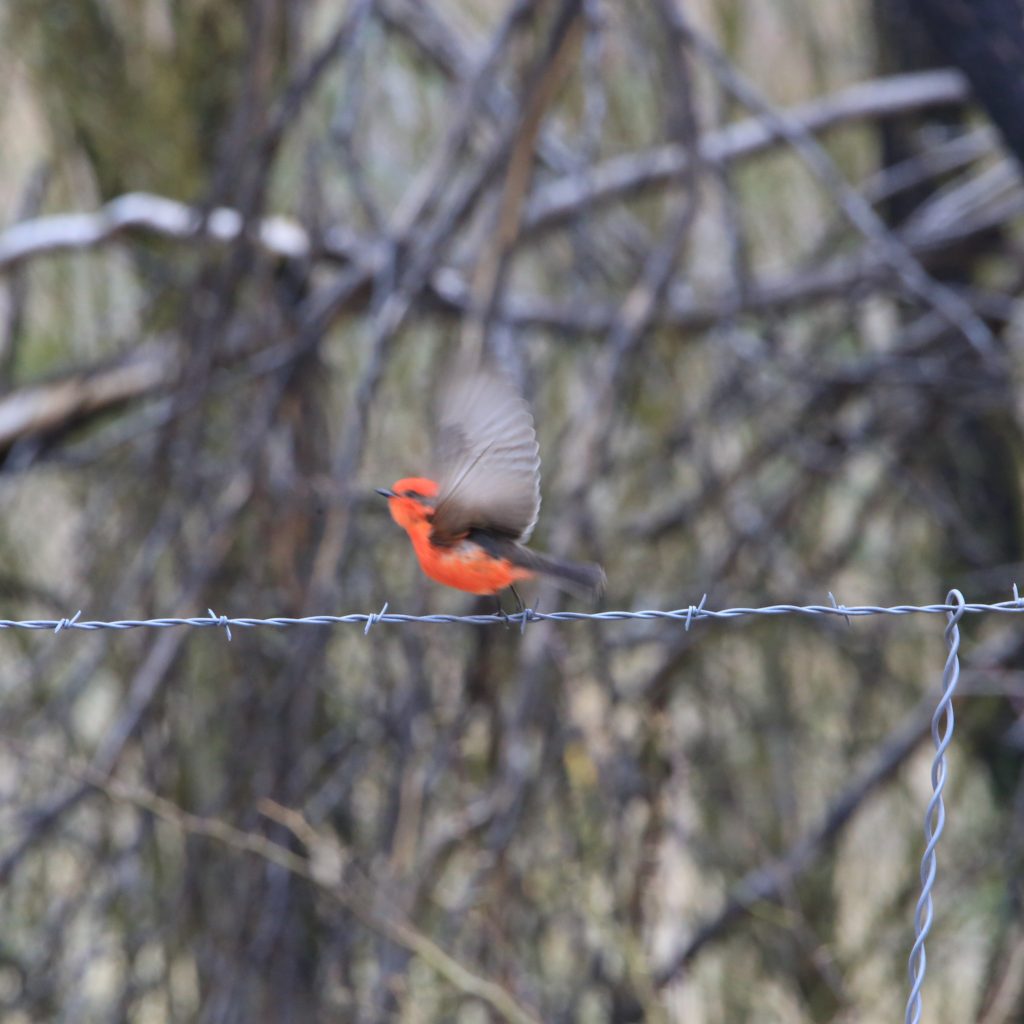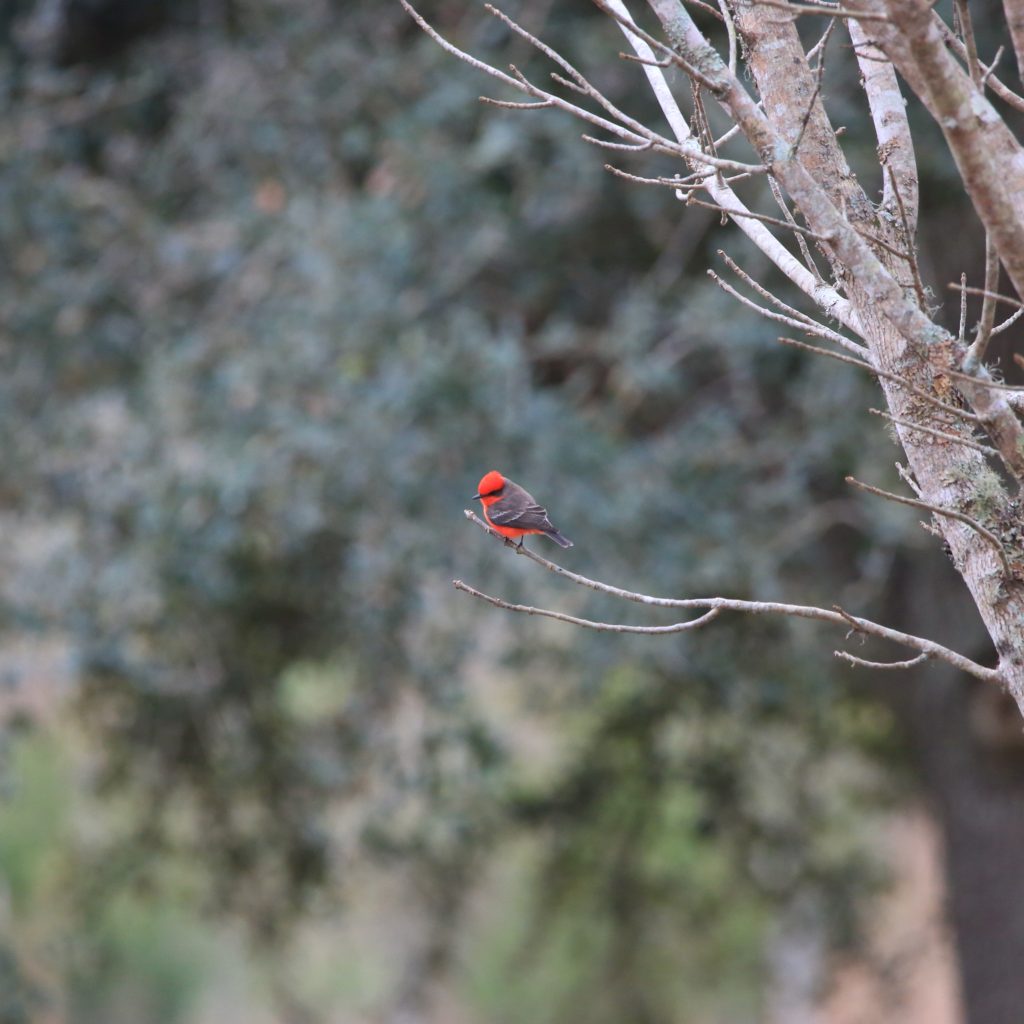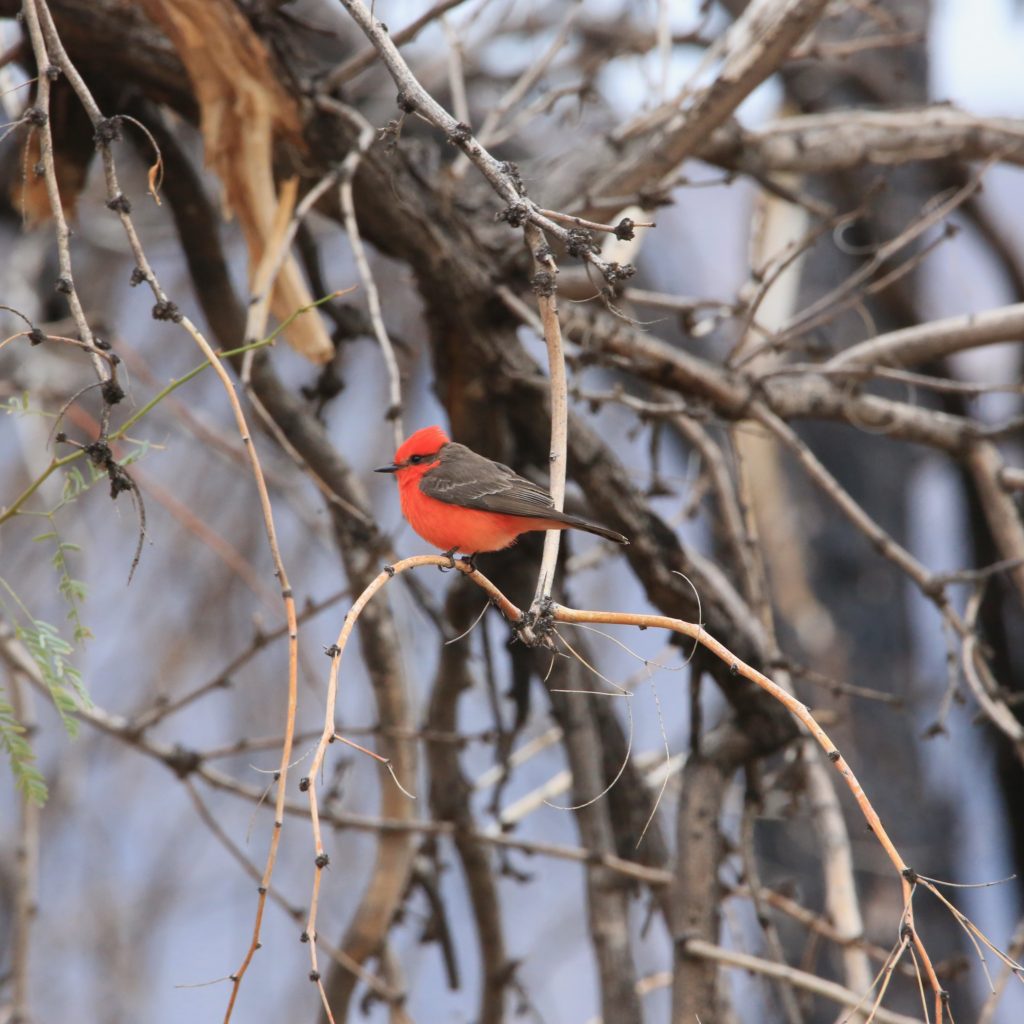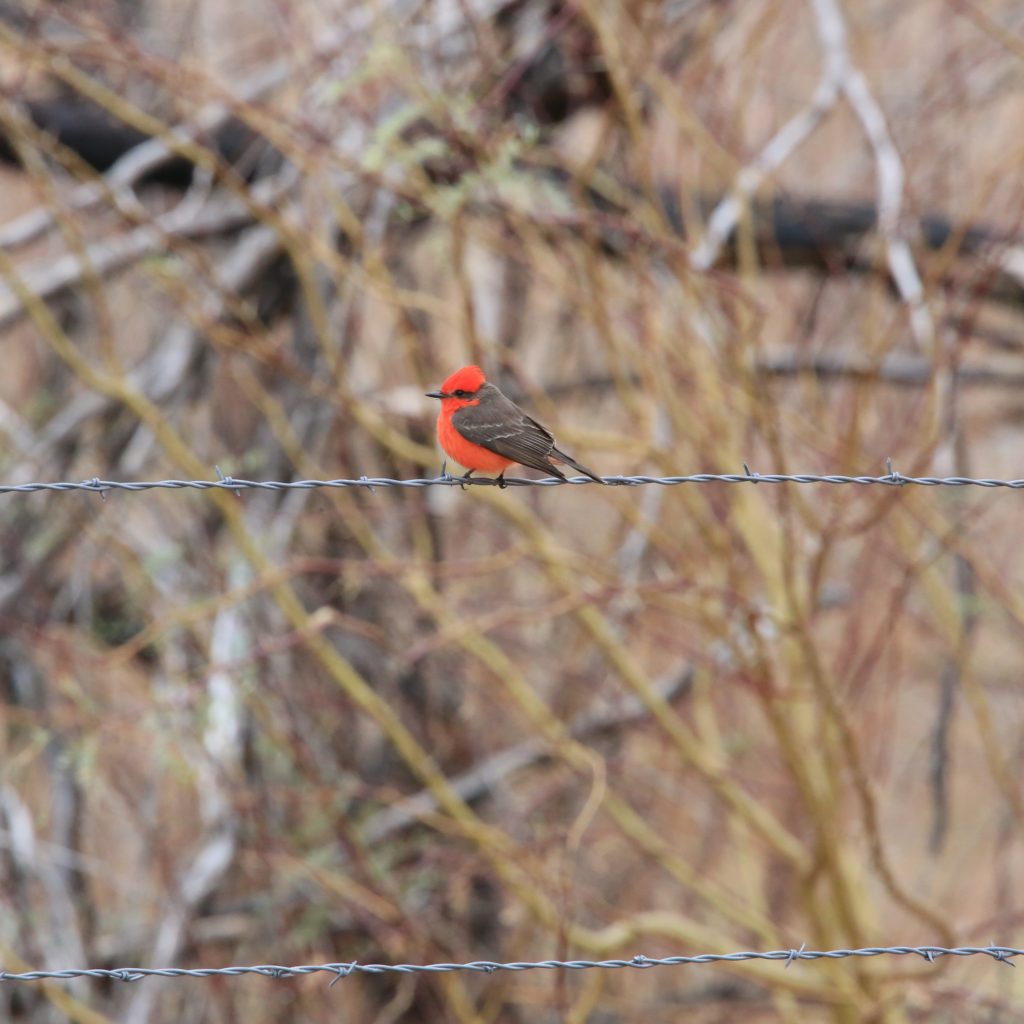The Vermilion Flycatcher is a small songbird, with a distinctive vermilion-red coloration that sets them apart from the otherwise dull members of the Tyrannidae family. You can find them in the southern regions of North America and in South America, near rivers, streams, and open or semi-open environments like bushy grasslands. They are a common breeder in Texas, New Mexico, and Arizona, as well as in Argentina and Uruguay.
About Vermilion Flycatchers
Vermilion Flycatchers are socially monogamous and live singly or in pairs. They often perch on fences along roadsides. These birds can be residents or migrants, some wintering at the Gulf Coast or California and others migrating to Mexico. These flaming passerines are productive enough to brood twice or thrice during the breeding season, running from March to June. Today, we will take a deeper look into the Vermilion Flycatcher, covering:
● Vermilion Flycatcher Photos, Color Pattern, Song
● Vermilion Flycatcher Size, Eating Behavior, Habitat
● Vermilion Flycatcher Range and Migration, Nesting
GET KIDS BIRD WATCHING
Vermilion Flycatcher Color Pattern
This Flycatcher is named after its bold, bright red plumage and has contrasting brown parts. The striking vermilion crests and underparts of the male differ from the streaky pink and white breasts and belly of the female. Their wings and tails are chocolate brown and the male has a strong mask running from the nape and covering the ears and the region in front of the eyes. The females show faint masking and have grayish crowns and ear coverts. The underparts of the male show a slight fade from red to orange, and both the male and female have black beaks. Pale gray flight feathers give them a beautiful barring design on the wings. The white eyebrows accentuate the eyes in females and in immature males but may be absent in adult males. Although hard to notice, there is a faint white streaking on the
breast in both sexes.
Dark morphs of the Vermilion Flycatcher show darker brown coloration with rufous underparts with occasional bright spots of red. Other subspecies are classified on the basis of coloration and vibrance of the male’s plumage, which can range from bright red and orange to darker scarlet and purple.
Description and Identification
A spectacular addition to the North American Flycatchers, this bird is easy to recognize due to its fiery, saturated color. Females are harder to distinguish and are often mistaken for the Say’s Phoebe. Males may look similar to the Scarlet Tanager, but looking out for the Flycatcher’s brown or black mask can help identify them. The males of the species sing the accelerating and chirpy common song that goes “p-p-p-pik-zee”. They are easier to identify when they perch and when calling. They can be recognized in flight due to the bright colors of their underparts and their curved wing shape.
Vermilion Flycatcher Song
There is a lot of debate on the vocalizations of this species. The male’s song is the most frequent singing, and it sounds like “ching-tink-a-le-tink” or “pt-pt-pre-ee-een or pit pit pit pidddrrrreedrr”. Which they repeat ten times as they fly above the canopy in rough circles. The first part of the song is varied according to what they want to convey, carrying information of the male’s fitness, which is then followed by four elements to complete the song. After nest construction and before dawn, the song has a longer duration. The female may sing a “tjee-tjee-tjee”, both as an invitation for mating as well as in defense of aggressive behavior.
Calls include a squeaky “pisk-pisk” or “peent” when they are looking for food. Adults often chatter to each other using various vocalizations in a slower, relaxing song, and at other times sing to establish their territory.
Vermilion Flycatcher Size
Measuring just 5.1- 5.5 inches, the Vermilion Flycatcher is a small bird weighing up to 0.49 ounces. When measured from wingtip to the body, they reach a length of 3.1 inches, and their wingspan ranges from 9.4- 9.8 inches. They are average-sized Flycatchers, with a compact body and shorter tails.
Vermilion Flycatcher Behavior
This brightly colored Flycatcher settles in open, scrubby grasslands and near rivers and streams. Their flight pattern is swift and regular, the wingbeat assuring no up and down movement during transit. They do not glide or hop much, and only occasionally land on the ground. While foraging for a nutritious meal, the Vermilion Flycatcher flies short distances. If their prey evades them, the flycatcher switches to a longer, erratic flight, swooping in to make a catch. They can also hover for a few brief moments when feeding their mate or collecting prey. They usually call from high above canopies, at heights of 90 feet, although they may risk attention by calling from heights as low as 3 feet.
Interestingly, these birds are live in pairs and are socially monogamous, although both males and females engage in extra-pair copulation. Pairs form at breeding grounds, where females arrive first. Then, males arrive with a food offering for the female and initiate mating. During their breeding season, pairs can brood up to three times, each clutch typically consists of 2-3 whitish or pale buff eggs with contrasting markings. These Flycatchers also exhibit brood parasitism, as some females will lay their eggs in another pair’s nest.
Sometimes males allow females who they are not bonded with to lay eggs in their own nest in exchange for mating, letting the female outsource the work of raising another chick. Not much is known about how Vermilion Flycatchers clean themselves to maintain their striking appearance. They wipe their beaks after feeding, and females preen away from their nests during the incubation period. You can also see them wiping their heads on the underside of their wings to clean primary feathers and wing coverts. To defend their territory, males will open up their flaming crest and spread their tails out like a fan. They aggressively snap their beaks and wag their tails to scare off the competition.
Vermilion Flycatcher Diet
The Vermilion Flycatcher is a sit-and-wait predator. They forage in open areas, usually closer to the ground and rarely from vegetation. They perch in exposed areas and observe to find prey one at a time, and take back their larger findings to their perch to first beat it dead before consumption. On-ground prey is taken from rapid perch-to-ground sallies, and the individual will return to perch after. They have swift, short, and direct foraging flights, which may get erratic and involve swooping to make the catch. Given its name, this bird loves to feed on flies and a variety of other invertebrates, including bees, grasshoppers, crickets, and beetles. Once they are done eating, they cough up a pellet of the indigestible foods in their diet. They drink water from still bodies and do not eat any vegetation.
Vermilion Flycatcher Habitat
Choosing rather open, scrubby grasslands, Vermilion Flycatchers prefer to live near freshwater sources like rivers and streams. They spend time around riparian woodland, breeding in cottonwood or mesquite-dominated areas. The lower parts of the canopy in their habitat are prevalent with invasive Bermuda grass. These birds enjoy perching openly and can be easily spotted on fence posts and alongside roadways near farmland. They fly above spaced-out canopies and forage closer to the ground where they can find a vast variety of insects to pick from. Their habitats can range up to elevations of 9,800 feet.
Range and Migration
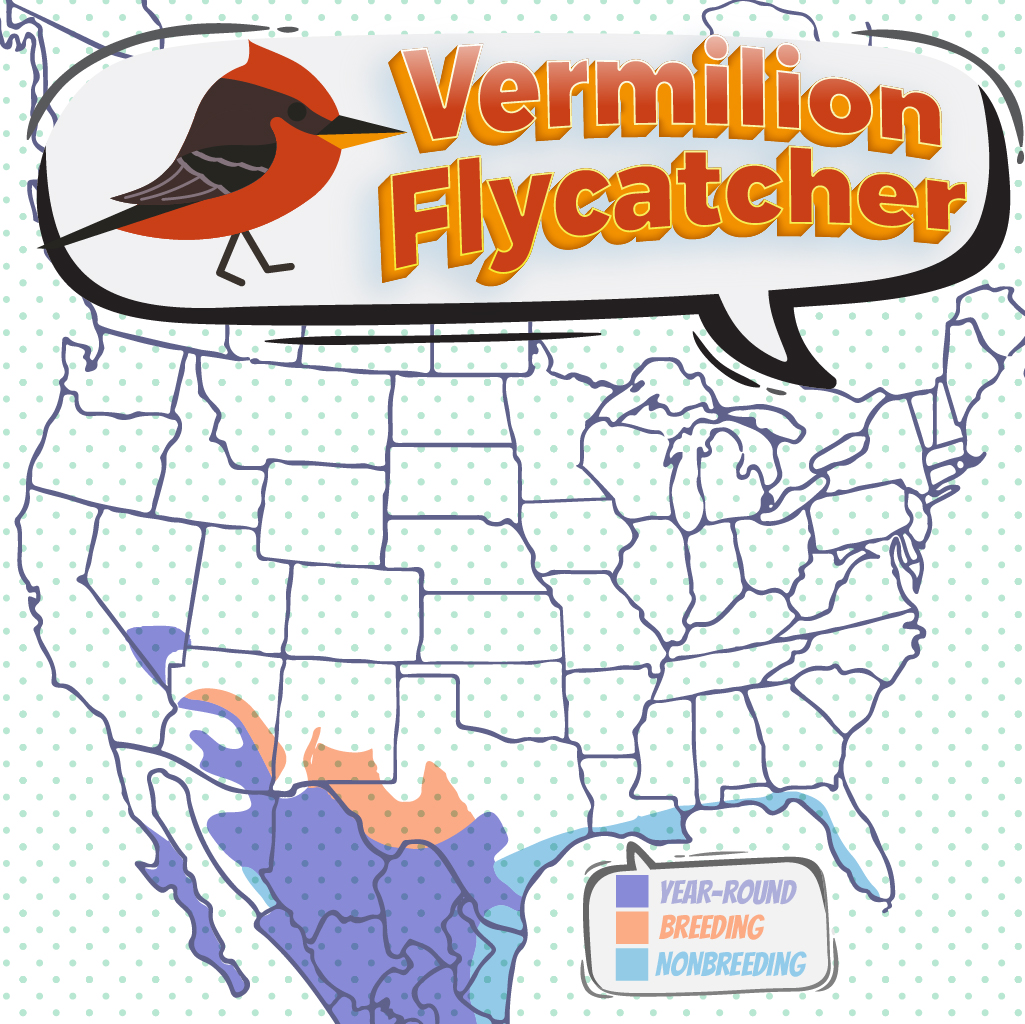
Being part of the Tyrant Flycatcher family, both North and South America is home to the Vermilion Flycatcher. Their range covers all of Mexico, southwestern United States, and the central and northwestern region of South America, but has also been recorded as far up as Canada. They are a homely species; most are residents, but breeding populations found in the extremes of their range migrate. The North American populations migrate in August and return by April. The South American populations make a longer migration and fly to the northern region of the Brazilian Amazon as the temperature does not reach below 30 °F. These small compact birds migrate up to 2,500 miles away to keep themselves warm and cozy.
Vermilion Flycatcher Lifecycle
Females of the species are the first to arrive at breeding grounds. The males soon follow and bring along an insect to offer. If the female approves of the courtship, the pair bonds, and mates together to build a nest. Then, the female lays 2-4 white eggs with olive, lavender, or brown markings and incubates them for two weeks. Once they are ready, the hungry hatchlings emerge. Now, the parents have to feed their offspring to ensure their survival. After another two weeks, the juvenile Flycatchers are ready to leave the nest, giving their parents another opportunity to brood before the breeding season comes to an end.
Nesting
After bonding to form pairs, the male inspects the habitat to find a suitable fork in trees like mesquite, cottonwood, oak, or pecan. The selection involves a spectacular display, in which the male shows nest-building movements while singing. Puffing out feathers and soaring up to 50 feet or higher, the male chatters a special call near the potential site. The female then builds the nest out of grass and twigs, lined with finer materials like hair and feathers, finally topped off with spiderwebs and lichens. The pair ensures to make a safe space for their brood by nesting near water bodies and an abundant source of food.
Anatomy of a Vermilion Flycatcher
This small passerine has a small, compact body with a short tail. The males and females of the species are easily distinguishable from the bright red plumage of the male and the duller female. Their beaks are small, sharp, and black, perfect for snapping and grabbing their prey. They have proportionate legs and claws colored black and sport dark brown wings. They have slightly streaky breasts and dark, black irises. The ear coverts are masked in males, although the females have a lighter mask. When these birds are immature, they appear duller and may show more streaks. They have a small crest that they open and flare to communicate.
Final Thoughts
The Vermilion Flycatcher, first observed by Charles Darwin during his voyages in the 1830s, is a showstopper with its gorgeous fiery coloration. Its scientific name, Pyrocephalus obscurus translates to “flame- head dusky”, referring to the contrasting elements of its color pattern. These birds have seen a historical change in distribution and a rapid decline in numbers. Fortunately, their population is estimated between 5,000,000 and 50,000,000 individuals, deeming it ‘least concern’ in terms of its threat of extinction. However, the species is still vulnerable to changing climate and is further threatened by habitat destruction facilitated by human activity. The wildcard of a saturated plumage within the
rather drab family of Tyrant Flycatchers is telling of the immense biodiversity in passerines found in the western hemisphere. Not much is well studied about this bird, leaving a trail of mysteries about their migration, breeding, and social behavior. Sometimes seen hundreds of miles off its range, the Vermilion Flycatcher allows itself to be unpredictable in aspects of its social behavior and habitat preference. Studying such a bird may help us answer
complex questions about adaptation and evolution, proving to be as interesting as its underparts!
Ornithology
Bird Watching Academy & Camp Subscription Boxes
At the Bird Watching Academy & Camp we help kids, youth, and adults get excited and involved in bird watching. We have several monthly subscription boxes that you can subscribe to. Our monthly subscription boxes help kids, youth, and adults learn about birds, bird watching, and bird conservation.
- Kids Bird Watching Monthly Subscription$10.00 / month
- Kid & Adult Bird Watching Starter Pack Subscription$10.00 / month and a $72.00 sign-up fee
- Kids Bird Watching Starter Pack Subscription$10.00 / month and a $19.00 sign-up fee
Bird Watching Binoculars for Identifying Vermilion Flycatchers
The most common types of bird watching binoculars for viewing Vermilion Flycatchers are 8×21 binoculars and 10×42 binoculars. Bird Watching Academy & Camp sells really nice 8×21 binoculars and 10×42 binoculars. You can view and purchase them here.
- Birding Binoculars$49.99
- Kids Binoculars$13.99
Vermilion Flycatcher Stickers
Stickers are a great way for you to display your love for bird watching and the Vermilion Flycatcher. We sell a monthly subscription sticker pack. The sticker packs have 12 bird stickers. These sticker packs will help your kids learn new birds every month.
Bird Feeders For Vermilion Flycatchers
There are many types of bird feeders. Here are our favorite bird feeders for your backyard. We use all of these bird feeders currently. Kids will have a great time watching birds eat at these bird feeders. Using this collection of bird feeders will provide a wide variety and many types of birds.
Best Bird Houses For Vermilion Flycatchers
There are many types of bird houses. Building a bird house is always fun but can be frustrating. Getting a bird house for kids to watch birds grow is always fun. If you spend a little extra money on bird houses, it will be well worth every penny and they’ll look great.



